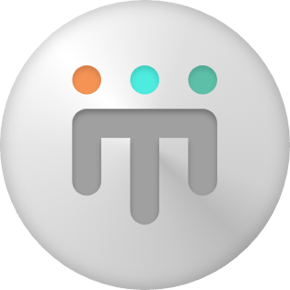HR teams today have more on their plate than ever. From managing recruitment and onboarding to tracking leave and compliance, the list keeps growing. This is where an HRIS (Human Resource Information System) becomes essential.
An HRIS is your central digital tool that helps manage employee data, automate HR tasks, and streamline daily operations. It improves efficiency, enhances compliance, and supports better decision-making across your business.
Understanding the Role of an HRIS
An HRIS is a software solution that stores and manages employee information in a central database. It supports HR functions like hiring, onboarding, payroll, performance management, and compliance.
Think of it as the modern replacement for spreadsheets and paper files. For example, onboarding five employees manually might take hours—collecting tax forms, sending out contracts, and setting up email accounts. With an HRIS, these steps are streamlined into an automated process that takes just minutes.
According to a 2023 Deloitte report, organisations using digital HR technology cut admin workloads by up to 40%.
Explore how our ATS and onboarding tools make this easier for Australian businesses.
Key Benefits of Using an HRIS in Your Organisation
Here are the major advantages of adopting an HRIS:
- Centralises employee data in one secure platform
- Reduces time spent on manual tasks
- Supports compliance with workplace laws
- Enables faster, data-driven HR decisions
- Scales as your organisation grows
Example: A business using Martian Logic's onboarding software reduced their new hire onboarding time by 60%.
More detailed benefits include:
- Better data accuracy: Minimises duplication and manual errors
- Employee self-service: Staff can update their information, apply for leave, and access payslips without going through HR
- Improved compliance: Alerts for policy updates, license expiries, and visa renewals
- Real-time insights: Access to up-to-date reports and analytics
- Enhanced employee experience: Smoother onboarding and clearer performance goals
LinkedIn’s 2023 Global Talent Trends report shows that companies using data-driven HR tools see a 19% increase in employee engagement.
Features to Look for in a Good HRIS
Not every Human Resource Information System (HRIS) offers the same functionality. When evaluating a system, consider these essential features:
- Integrated Applicant Tracking System (ATS):
Streamlines recruitment by managing candidates from application to offer stage, helping HR teams stay organised and efficient. - Onboarding Workflows:
Automates critical tasks such as employment contract signing, document collection, compliance checks, and setting up new employee tasks, ensuring a smooth start for new hires. - Performance Management Tools:
Facilitates goal-setting, ongoing feedback, performance reviews, and development planning to help improve employee engagement and productivity. - Self-Service Portal:
Empowers employees to update their personal details, access payslips, apply for leave, and manage other HR-related tasks, reducing administrative burden on HR teams. - Workforce Management:
Helps with scheduling, time and attendance tracking, managing shift rosters, and monitoring employee absences to support accurate payroll and staffing needs. - Payroll Integration:
Seamlessly connects HR data with payroll systems to automate calculations, tax obligations, superannuation contributions, and ensure employees are paid accurately and on time. - Compliance Reporting:
Supports regulatory compliance by generating reports for Fair Work audits, workplace gender equality submissions, superannuation reporting, and other statutory requirements. - Data Security and Compliance:
Ensures secure handling of employee data and compliance with Australian privacy laws such as the Privacy Act 1988 and the Australian Privacy Principles (APPs). A reliable HRIS should include features like multi-factor authentication, encrypted data storage, and role-based access to protect sensitive information.
Explore our applicant tracking system and performance management module for real-life solutions.
How to Implement an HRIS Successfully
Getting started with a Human Resource Information System (HRIS) doesn’t have to be complicated. Here’s a straightforward process to help ensure a smooth and successful implementation:
Define Your Needs
Clearly identify the pain points you're trying to solve. Are manual admin tasks eating into your team's time? Is onboarding inconsistent or delayed? Perhaps you're struggling with reporting or gaining insights into your workforce. Understanding your priorities upfront will guide your selection and setup.
Example: A growing retail company noticed delays in onboarding casual staff each season. By prioritising onboarding automation in their HRIS, they reduced the average onboarding time from five days to just one.
Choose the Right Platform
Select a system that aligns with your current size and can scale with your business. Look for flexible, cloud-based platforms like Martian Logic that integrate well with existing tools and support future growth. Ensure the vendor offers strong local support and complies with Australian data laws.
Involve Stakeholders
Engage key departments such as HR, IT, payroll, and leadership from the beginning. Their input ensures the system fits across functions and avoids disruptions later. Run workshops or planning sessions to define roles, responsibilities, and success metrics.
Train Your Team
Don't assume everyone will intuitively know how to use the new platform. Organise hands-on training tailored to different user roles—HR managers, general staff, and executives. Offer user guides, FAQs, and refresher sessions to promote long-term adoption.
Track Progress
Post-implementation, monitor how the system is being used. Are employees logging in regularly? Is onboarding truly streamlined? Use built-in analytics and feedback from users to identify gaps and adjust workflows.
Example: After rolling out an HRIS, an accounting firm noticed low usage of self-service features. By running short internal awareness campaigns and offering “how-to” sessions, they boosted engagement by 60% within a month.
Need support rolling this out? Contact us for tailored advice.
Empowering HR Through Smart Systems
An HRIS isn’t just about cutting down on paperwork—it’s about transforming how your organisation manages its people. From automating leave approvals and streamlining onboarding to improving compliance and enabling smarter workforce decisions, the right HRIS helps align HR operations with broader business objectives.
If your current systems feel outdated, fragmented, or overly manual, it might be time to consider a smarter solution.
Discover how Martian Logic can help you build a more efficient, compliant, and connected workplace.

